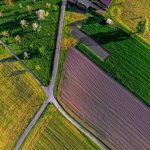June 17, 2019 10:59 am
Published by Climate Extremes
Ying-Ping Wang (CSIRO). Land-Atmosphere meeting – Variation of land carbon uptake: dominant drivers and their time-scale dependence. 3pm, Wednesday, June 19. Join from PC, Mac, Linux, iOS or Android: https://unsw.zoom.us/j/670855742 Or iPhone one-tap: 16465588656,670855742# or 16699006833,670855742# Or Telephone: Dial: +1 646 558 8656 (US Toll) or +1 669 900 6833 (US Toll) Meeting ID: 670 855 742 International numbers available: https://zoom.us/u/aptljBZ8m Or a H.323/SIP room system: SIP:7588@aarnet.edu.au or H323: 670855742@182.255.112.21 (From Cisco) or H323: 182.255.112.21##670855742 (From Huawei, LifeSize, Polycom) or... View Article
May 20, 2019 11:05 am
Published by Climate Extremes
Topic: Land – AtmosphereTime: Wednesday, May 22, 2019 2:55pm Canberra, Melbourne, Sydney Join from PC, Mac, Linux, iOS or Android: https://unsw.zoom.us/j/949596576Or iPhone one-tap: 16465588656,949596576# or 16699006833,949596576#Or Telephone: Dial: +1 646 558 8656 (US Toll) or +1 669 900 6833 (US Toll) Meeting ID: 949 596 576 International numbers available: https://zoom.us/u/aptljBZ8m Or a H.323/SIP room system: SIP: 7588@aarnet.edu.au or H323: 949596576@182.255.112.21 (From Cisco) or H323: 182.255.112.21##949596576 (From Huawei, LifeSize, Polycom) or 162.255.37.11 or 162.255.36.11 (U.S.) Meeting ID: 949596576
 November 27, 2018 10:32 am
Published by Climate Extremes
November 27, 2018 10:32 am
Published by Climate Extremes
Bella Blanche writes about spending time on the vast Macfarlane Station in Tambo, Queensland and introduces a methodology to assess risks posed by climate change, and the vulnerability of the native rangeland resources located west of the Great Dividing Range.
 August 7, 2018 10:06 am
Published by Climate Extremes
August 7, 2018 10:06 am
Published by Climate Extremes
The past four months since out last newsletter has been tightly packed with the official launch of CLEX, the legacy event for ARCCSS and an acceleration in important research across all of our programs.
 August 4, 2018 7:20 am
Published by Climate Extremes
August 4, 2018 7:20 am
Published by Climate Extremes
Research has now begun in earnest in the Drought Research Program with all key staff finally in place. This has proved timely. At the time of writing (August 2018) most of NSW has been drought declared and forecasters suggesting little sign of drought-breaking rains over coming months.
 July 30, 2018 4:57 am
Published by Climate Extremes
July 30, 2018 4:57 am
Published by Climate Extremes
A new study by CLEX researchers using observations from FLUXNET sites identifies regions of high and low predictability and will likely help improve land surface model evaluation.
 July 16, 2018 6:44 am
Published by Climate Extremes
July 16, 2018 6:44 am
Published by Climate Extremes
New research clearly demonstrates the potential to predict long-term LAI using simple ecohydrological theory. This approach could potentially be incorporated into existing terrestrial biosphere models and help improve predictions of LAI.
 July 6, 2018 3:43 am
Published by Climate Extremes
July 6, 2018 3:43 am
Published by Climate Extremes
The application of a simple carbon balance model, combined with a data assimilation approach, has the potential to improve the process understanding embedded in models, which is used to predict responses of the carbon cycle to climate change.
 June 12, 2018 3:13 am
Published by Climate Extremes
June 12, 2018 3:13 am
Published by Climate Extremes
This project will connect plant water use and stomatal conductance models differentiated by vegetation-soil systems with land surface models to provide new insight into the impacts of the built environment on moisture fluxes that influence heatwave intensity. Then it will investigate the climate impacts of the dynamic response of greenery in extreme heat conditions.
 April 1, 2018 12:07 am
Published by Climate Extremes
April 1, 2018 12:07 am
Published by Climate Extremes
New research published in Nature Geoscience has found that climate engineering that modifies the properties of the land surface in highly populated areas and agricultural areas over North America, Europe and Asia could reduce extreme temperatures there by up to 2-3°C.








